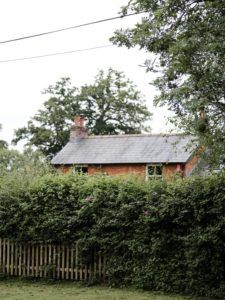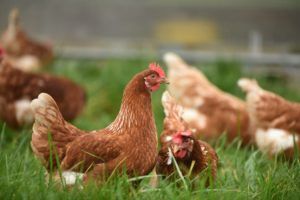Most dwellings built for agricultural purposes are subject to an occupancy condition which restricts the occupation of the dwelling to a person employed in agriculture.
In terms of the wording of such conditions, whilst there have been many variations since the 1950s, generally the standard condition will usually state:
‘The occupation of the dwelling shall be limited to a person solely or mainly employed, or last employed, in the locality in agriculture or in forestry, or a widow or widower of such a person, and to any resident dependants’.
Irrespective of changes to the farm, the condition will remain on the dwelling in perpetuity ensuring it is available to the wider ‘agricultural community’.
Case Study
This case involves two agricultural dwellings associated with a former dairy farm extending to approximately 152 acres (61.5 hectares).
Dwelling one is a four bedroom farmhouse set in an approximate half acre plot, and the second dwelling a six bedroom farmhouse set in approximately 2 acres.
Dwelling one was granted planning permission in 2001 to house the herdsman associated with the business. The second dwelling was granted in 2011 to act as the main farmhouse to support the needs of the farming enterprise.
Both dwellings and the land were tied together by a legal Section 106 Agreement.
In 2014 due to on-going issues and concerns within the UK milk industry the decision was made to cease trading.
A year later the Section 106 Agreement was modified enabling land to be sold off, reducing the holding to 64 acres (25 hectares) of which 55 acres was let out on a farm business tenancy agreement.
In 2016 planning permission was granted to change use of the former dairy buildings to Business Use and Storage and Distribution use, use classes E and B8.
In 2020, the modified Section 106 Agreement was completely discharged.
The site has become a successful business park with 12 units let out to rural businesses.
However, both the farmhouses remain restricted, both subject to agricultural occupancy conditions, despite there being no agricultural activity on the site since 2014. The main 6 bedroom farmhouse was let out as a holiday let rather be left empty and at risk of falling into disrepair and open to vandalism.
Our clients instructed us to advise on the best options for both the dwellings moving forwards and pre-application advice was sought from the Local Planning Authority to gauge their views on the matter. Many farms were affected by the issues in the UK milk industry but the re-use of the buildings for commercial use has proven the best use with continued support to the local rural economy.
Removal of the restrictions seemed the best solution and were discussed with the Local Planning Authority. Although there was a case to be argued that the conditions had outlived their usefulness and were no longer reasonably necessary, the Local Planning Authority confirmed they would only consider removal if there was no need for the dwellings as agricultural dwellings by the local community. It is worth noting at this point that Dwelling one was valued at £610,000 which reflected a discount for the encumbrance of the condition and Dwelling two, over £1,000,000, reflecting a discount for the encumbrance of the condition.
The properties were marketed for sale either available together or separately. There was also an option to purchase the entire property which included the business park and potentially the land let out on a farm business tenancy agreement. The estimate in terms of value for the whole property was over £7,000,000.
As anticipated by Acorus, although some interest was generated, albeit limited, no interest progressed to any offers being received for any element of the property sale and most parties did not comply with the conditions.
As the property failed to sell, Acorus submitted a planning application to remove the agricultural occupancy conditions from the dwellings. Two robust planning statements were produced which included proof of the efforts made to sell the property including contacting local agricultural businesses.
Each dwelling was assessed separately by the Local Planning Authority and various statutory consultees consulted. In both cases the Parish Council objected to the application. However, the Local Planning Authority was in favour of granting the removals. As a result, a 5-day protocol was issued which resulted in a successful outcome for our clients with a delegated decision to grant removal of the conditions.
Our clients are delighted with the outcome and can look to how the site can be best utilised now and for future generations.






